September 2007, page 78
Patagonia for beginners
Given the whole reversal of the magnetic poles, which direction it’s warmer and all that, one would think that here in Argentina we’d be looking for Northern charm, and Northern hospitality, and talking about the Deep North… but, it seems there’s just something about going south that brings all that out, even when south is a frozen glacier… Admittedly the glacier’s only a small part of Patagonia, which actually encompasses several provinces “down that-a-way”, and also offers up ingredients for cuisine that are unique in regard to the rest of the country – particularly in the world of game animals and seafood.
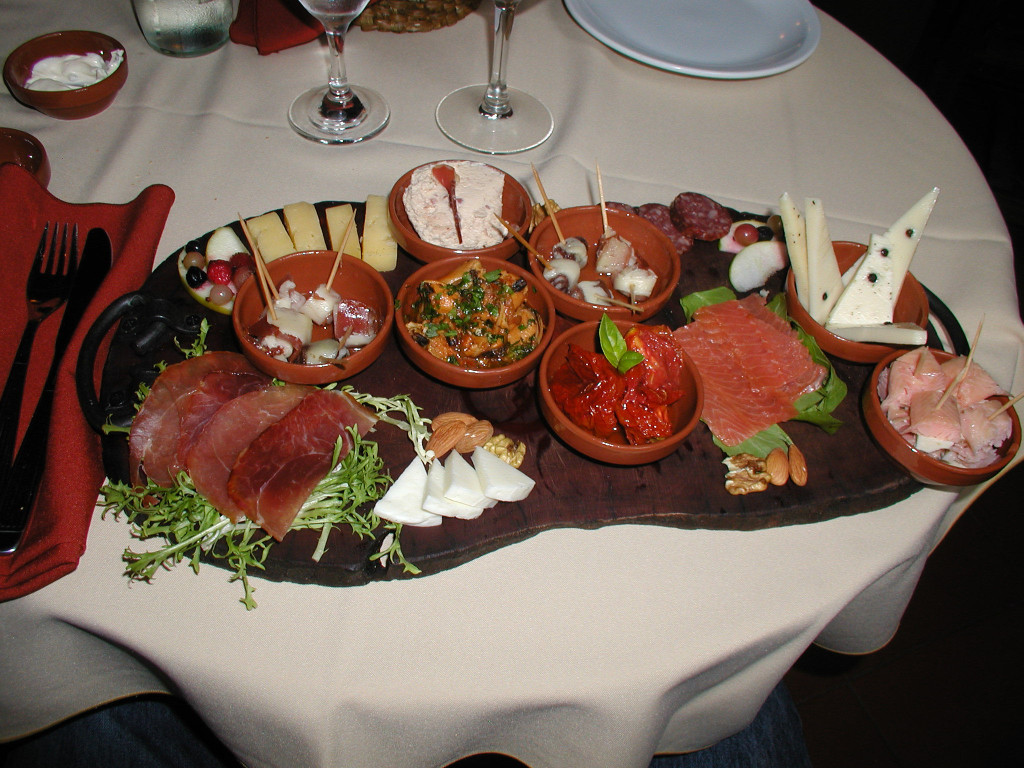
Buenos Aires is home to a small, and growing number of restaurants that specialize in the cuisine of Patagonia, ranging from simple neighborhood hangouts to among the poshest of restaurants in the city. Easily the most fun to be had is at one of the former, Mítico Sur, hidden away at number 389 on the narrow cobblestone Pasaje San Lorenzo in the barrio of San Telmo. This rustic two-story converted home offers up a literal sampling of tidbits from the deep south in the form of what are called tablas. We might call them an antipasto if we were going Italian, but we’re not… Mítico Sur serves an array of different platters, ranging from vegetable and fruits, to cheeses, to seafood, to meat, and combinations of all four – smoked, pickled, cured, and fresh, ingredients that Patagonia is famous for are laid out in little dishes to be nibbled upon. Among the best, the smoked trout and the cured wild boar, or jabalí. You can order a tabla by yourself and have more than sufficient for a meal, or you can share with friends, the most fun – and wash it all down with a glass or bottle of one of the region’s excellent wines – and this spot offers up one of the best selections of Patagonian wine to be found in the city – and very well priced.
The following two reviews got left off the page, which, given the start of the column takling about a number of restaurants, made no sense. Reproduced here:
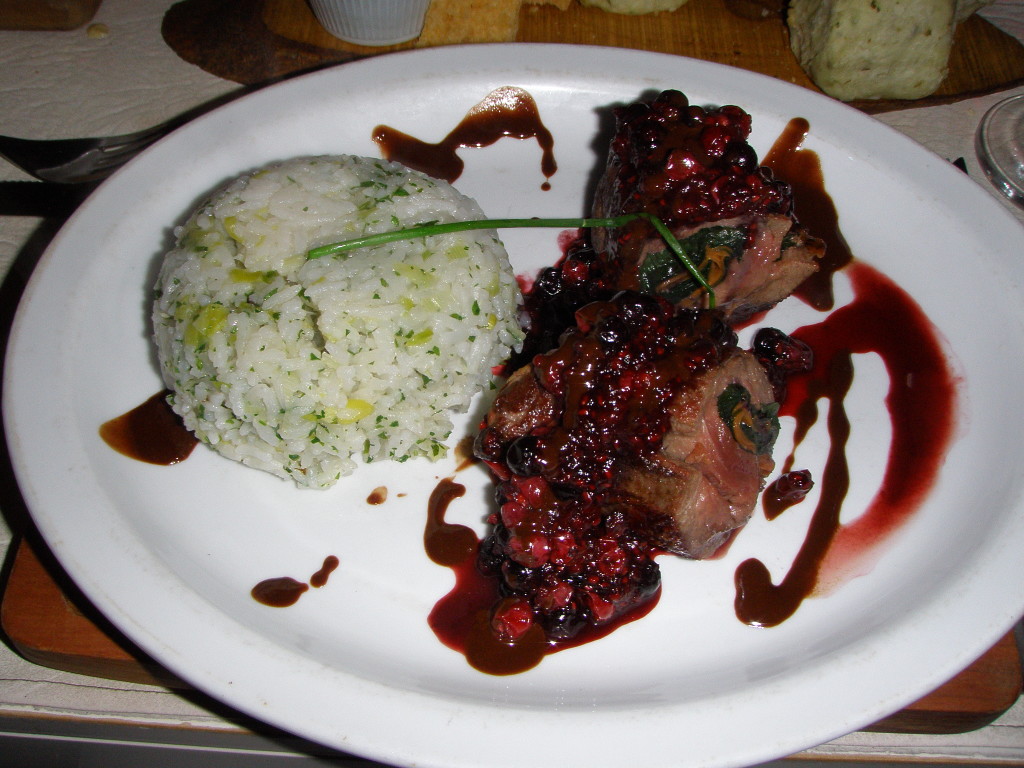
If you like a homey setting, but want something both a little less rustic and also more classically styled for dinner, head out to Palermo, at Honduras 5710, and grab a seat at Divina Patagonia (they also have a branch in San Telmo, at Balcarce 958), where you can treat yourself to a hearty and creative meal that again ranges the food world. Amongst the more interesting dishes, a roasted loin of wild venison served up with an elderberry and currant packed bitter chocolate sauce, a slow cooked breast of wild boar lacquered in a fresh raspberry puree, or crunchy on the outside and moist on the inside “meatballs” of smoked trout served with a Patagonian Dijon mustard sauce. The wine list carries a good selection of the major commercial brands from both Patagonia and other regions of the country and is fairly priced.
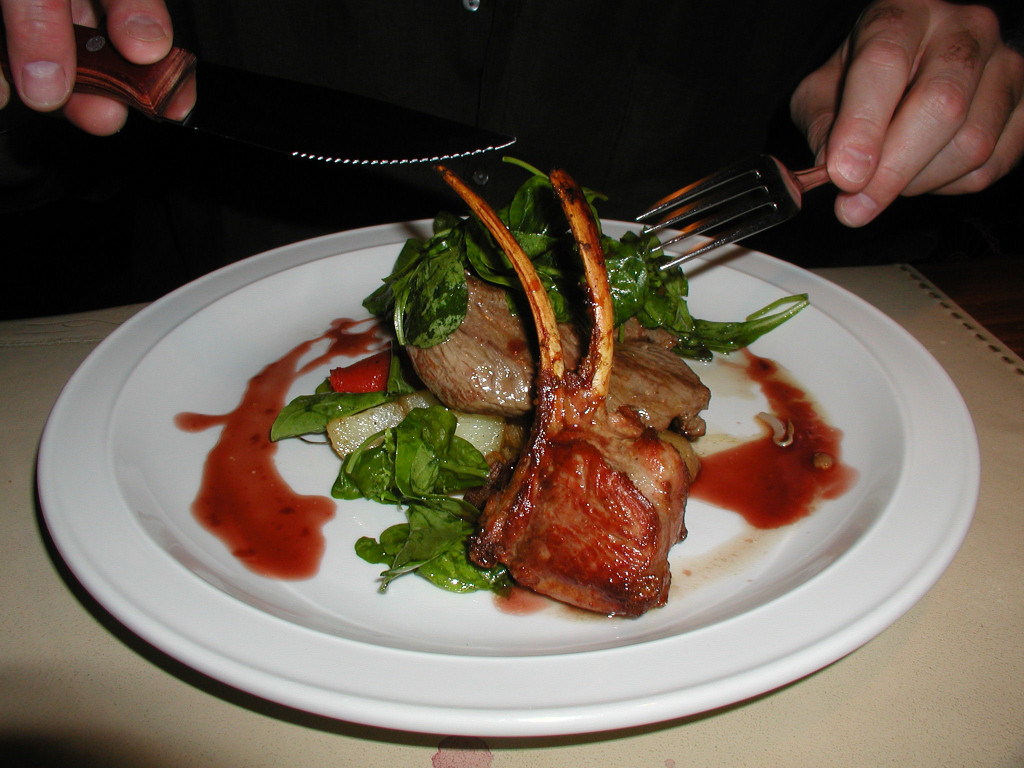
Possibly you’re in the mood to up the ante and head for one of the lugares de lujo, or ritzy, upscale spots. While everyone likes to make fun of the Puerto Madero refurbished warehouse district and its tourism oriented dining, one of the things to note is that that often means some pretty high quality food – lets face it, tourists can be pretty demanding. For a place that’ll live up to high standards, head on out into the Puerto and get yourself a table at Aires de Patagonia, Alicia M. de Justo 1798, a handsome room, done up in exotic woods from the south like lenga and rauli, that give the room a very classy feel. The food, likewise, with beautifully presented, creative dishes like a fresh crabmeat (centolla), zucchini, and apple salad stacked with phylo dough, or a rack of Patagonian lamb, cordero, leaning up against a slice of leg of lamb, and all juiced up with a reduction of Malbec and a delicious tomato confit. The wine list, strangely, focuses more on selections from Mendoza than Patagonia, but there are definitely some southern gems to be found – not surprisingly, given the locale, both food and wine here are expensive.
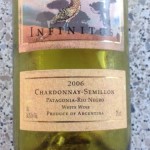 When it comes to wines, Patagonia isn’t the first spot that comes to most folks minds in regard to Argentina. It’s still a relatively new area for commercial wine-making, with three of the provinces, Rio Negro, Neuquen, and Chubut weighing in with selections. It’s a cool to cold climate for grape-growing, and so not surprisingly, grapes that do well in a chillier environment are showing up as some of the region’s best. On the white side, that has come to mean Semillon,
When it comes to wines, Patagonia isn’t the first spot that comes to most folks minds in regard to Argentina. It’s still a relatively new area for commercial wine-making, with three of the provinces, Rio Negro, Neuquen, and Chubut weighing in with selections. It’s a cool to cold climate for grape-growing, and so not surprisingly, grapes that do well in a chillier environment are showing up as some of the region’s best. On the white side, that has come to mean Semillon,  either on its own or blended, and the current reigning champ in that arena is the Infinitus Semillon-Chardonnay blend with its beautiful flavors of stone fruits, a touch of lanolin, minerals, and a mixed bag of spices. On the red side, unquestionably, Patagonia is producing Argentina’s best Pinot Noirs – in fact, the quality has been so superb that the owner of the famed Sassicaia super-Tuscan blend,
either on its own or blended, and the current reigning champ in that arena is the Infinitus Semillon-Chardonnay blend with its beautiful flavors of stone fruits, a touch of lanolin, minerals, and a mixed bag of spices. On the red side, unquestionably, Patagonia is producing Argentina’s best Pinot Noirs – in fact, the quality has been so superb that the owner of the famed Sassicaia super-Tuscan blend, 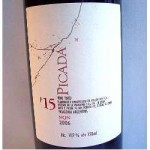 Piero Incisa della Rocchetta, snapped up a vineyard planted to the grape and has started producing a small quantity of pricey but spectacular Pinot under the name Bodega Chacra. For those whose budget and searching patience doesn’t stretch that far, there are a wide range of lesser priced and more widely available Pinots and other grapes, including a personal favorite blend from NQN winery (Neuquen sans vowels), called Picada 15 – a ripe, fruity, spicy, and delicious blend of Pinot noir and Cabernet Sauvignon.
Piero Incisa della Rocchetta, snapped up a vineyard planted to the grape and has started producing a small quantity of pricey but spectacular Pinot under the name Bodega Chacra. For those whose budget and searching patience doesn’t stretch that far, there are a wide range of lesser priced and more widely available Pinots and other grapes, including a personal favorite blend from NQN winery (Neuquen sans vowels), called Picada 15 – a ripe, fruity, spicy, and delicious blend of Pinot noir and Cabernet Sauvignon.
In October 2006, I started writing for this Spanish language magazine, covering their English language section for travellers. I wrote for them for about two years. The copy editor, apparently not fluent in English, used to put each paragraph in its own text box on a two column page, in what often seemed to be random order, making the thread of the column difficult to follow. I’ve restored the paragraphs to their original order.